Geoheritage Resource of Small Mud Lakes in the Semi-Arid Environments of the Russian South
Abstract
:1. Introduction
2. Study Object and Methodology
3. Results
3.1. General Lake Descriptions
3.2. Geoheritage Characteristics
4. Discussion
5. Conclusions
Author Contributions
Funding
Acknowledgments
Conflicts of Interest
References
- Doherty, E.; Murphy, G.; Hynes, S.; Buckley, C. Valuing ecosystem services across water bodies: Results from a discrete choice experiment. Ecosyst. Serv. 2014, 7, 89–97. [Google Scholar] [CrossRef]
- Dupont, D.P.; Adamowicz, W.L. Water Valuation. In Water Policy and Governance in Canada; Ienzetti, S., Dupont, D.P., Eds.; Global Issues in Water Policy; Springer: Cham, Switzerland, 2017; Volume 17, pp. 181–199. [Google Scholar]
- Ives, J.T.; Lawrence, T. A tale of two Great Lakes conferences: Urging global collaboration on our largest freshwater resources. J. Great Lakes Res. 2018, 44, 1289–1292. [Google Scholar] [CrossRef]
- Zilov, E.A. Water resources and the sustainable development of humankind: International cooperation in the rational use of freshwater-lake resources: Conclusions from materials of foreign studies. Water Resour 2013, 40, 84–95. [Google Scholar] [CrossRef]
- Dávid, L.; Baros, Z.; Patkós, C.; Tuohino, A. Lake tourism and global climate change: An integrative approach based on Finnish and Hungarian case-studies. Carpath. J. Earth Environ. Sci. 2012, 7, 121–136. [Google Scholar]
- Yusof, N.; Jamil, M.F.C.; Said, I.; Ali, A.N.O. Organizational culture and tourist satisfaction in a lake-based tourism area. Am. J. Appl. Sci. 2012, 9, 417–424. [Google Scholar]
- Reynard, E.; Brilha, J. (Eds.) Geoheritage: Assessment, Protection and Management; Elsevier: Amsterdam, The Netherlands, 2018; pp. 1–482. [Google Scholar]
- Ruban, D.A. Geodiversity as a precious national resource: A note on the role of geoparks. Resour. Policy 2017, 53, 103–108. [Google Scholar] [CrossRef]
- Dowling, R.; Newsome, D. (Eds.) Handbook of Geotourism; Edward Elgar Publishing: Cheltenham, UK, 2018; pp. 1–499. [Google Scholar]
- Górska-Zabielska, M.; Kamienska, K. Geotourism Potential of the Drawskie Lake District as a Support for the Planned Geopark named Postglacial Land of the Drawa and Dębnica Rivers. Quaest. Geogr. 2017, 36, 15–31. [Google Scholar] [CrossRef]
- Üner, S.; Aliriz, M.G.; Özsayin, E.; Selçuk, A.S.; Karabiyikoglu, M. Earthquake Induced Sedimentary Structures (Seismites): Geoconservation and Promotion as Geological Heritage (Lake Van-Turkey). Geoheritage 2017, 9, 133–139. [Google Scholar] [CrossRef]
- Fedorov, Y.A.; Ruban, D.A. Peloids as important resource for regional sustainable development: Conceptual considerations. Espacios 2018, 39, 21. [Google Scholar]
- Sallam, E.S.; Abd El-Aal, A.K.; Fedorov, Y.A.; Bobrysheva, O.R.; Ruban, D.A. Geological heritage as a new kind of natural resource in the Siwa Oasis, Egypt: The first assessment, comparison to the Russian South and sustainable development issues. J. Afr. Earth Sci. 2018, 144, 151–160. [Google Scholar] [CrossRef]
- Fedorov, Y.A.; Nikolayevich, G.D.; Trubnik, R.G. Bacteria of the Clostridium genus, methane and hydrogen sulfide in sulfide mud of the Taman Peninsula reservoirs. OnLine J. Biol. Sci. 2018, 18, 315–322. [Google Scholar] [CrossRef]
- Carcavilla Urqui, L.; Lopez Martinez, J.; Duran Valsero, J.J. Patrimonio Geologico y Geodiversidad: Investigacion, conservacion, gestion y relacion con los espacios naturales protegidos; Instituto Geologico y Minero de España: Madrid, Spain, 2007; pp. 1–360. [Google Scholar]
- Comănescu, L.; Nedelea, A. Public perception of the hazards affecting geomorphological heritage-case study: The central area of Bucegi Mts. (Southern Carpathians, Romania). Environ. Earth Sci. 2015, 73, 8487–8497. [Google Scholar] [CrossRef]
- Erhartic, B. Conserving geoheritage in Slovenia through geomorphosite mapping. Geovisions 2010, 35, 47–63. [Google Scholar]
- Reynard, E.; Perret, A.; Grangier, L.; Kozlik, L. Methodological approach for the assessment, protection, promotion and management of geoheritage. Geophys. Res. Abstr. 2012, 14, 3740. [Google Scholar]
- Ruban, D.A. Quantification of geodiversity and its loss. Proc. Geol. Assoc. 2010, 121, 326–333. [Google Scholar] [CrossRef]
- Habibi, T.; Ponedelnik, A.A.; Yashalova, N.N.; Ruban, D.A. Urban geoheritage complexity: Evidence of a unique natural resource from Shiraz city in Iran. Resour. Policy 2018, 59, 85–94. [Google Scholar] [CrossRef]
- Kirillova, K.; Fu, X.; Lehto, X.; Cai, L. What makes a destination beautiful? Dimensions of tourist aesthetic judgment. Tour. Manag. 2014, 42, 282–293. [Google Scholar] [CrossRef]
- Mikhailenko, A.V.; Nazarenko, O.V.; Ruban, D.A.; Zayats, P.P. Aesthetics-based classification of geological structures in outcrops for geotourism purposes: A tentative proposal. Geologos 2017, 23, 45–52. [Google Scholar] [CrossRef]
- Ruban, D.A. Aesthetic properties of geological heritage landscapes: Evidence from the Lagonaki Highland (Western Caucasus, Russia). J. Geogr. Inst. ”Jovan Cvijić” SASA 2018, 68, 289–296. [Google Scholar] [CrossRef]
- Mikhailenko, A.V.; Ruban, D.A. Geo-Heritage Specific Visibility as an Important Parameter in Geo-Tourism Resource Evaluation. Geosciences 2019, 9, 146. [Google Scholar] [CrossRef]
- Warowna, J.; Zgłobicki, W.; Kołodyńska-Gawrysiak, R.; Gajek, G.; Gawrysiak, L.; Telecka, M. Geotourist values of loess geoheritage within the planned Geopark Małopolska Vistula River Gap, E Poland. Quat. Int. 2016, 399, 46–57. [Google Scholar] [CrossRef]
- Gomes, C.; Carretero, M.I.; Pozo, M.; Maraver, F.; Canista, P.; Armijo, F.; Legido, J.L.; Teixeira, F.; Rautureau, M.; Delgado, R. Peloids and pelotherapy: Historical evolution, classification and glossary. App. Clay Sci. 2013, 75–76, 28–38. [Google Scholar] [CrossRef]
- Munteanu, C.; Dumistrascu, M. Therapeutic muds. Balneo-Res. J. 2011, 2, 12–16. [Google Scholar] [CrossRef]
- Kotova, I.; Kayukova, E.; Kotov, S. Peloids of Crimean salt lakes and the Dead Sea: Controls on composition and formation. Environ. Earth Sci. 2016, 75, 1207. [Google Scholar] [CrossRef]
- Margaret, S.M.; Nadia, M.-V.; Patricia, G.-H.; Clara, M.R.; Josiel, B.C.; Rebeca, H.; Fagundo, J.R.; Oscar, D.R.; Alina, G.R.; Cristina, D.L.; et al. Physicochemical characterization, elemental speciation and hydrogeochemical modeling of Santa Lucía peloid used for therapeutic uses. Revista Internacional de Contaminacion Ambiental 2018, 34, 105–110. [Google Scholar]
- Tserenkhand, B.; Badnainyambuu, Z.; Erdenechimeg, G.; Bolormaa, O. Composition of water and peloid from lake Buuntsagaan and element acummulation of peloid. J. Chem. Technol. Metall. 2018, 53, 258–266. [Google Scholar]
- Carretero, M.I.; Pozo, M.; Legido, J.L.; Fernández-González, M.V.; Delgao, R.; Gómez, I.; Armijo, F.; Maraver, F. Assessment of three Spanish clays for their use in pelotherapy. Appl. Clay Sci. 2014, 99, 131–143. [Google Scholar] [CrossRef]
- Karakaya, M.Ç.; Karakaya, N.; Sarıoğlan, Ş.; Koral, M. Some properties of thermal muds of some spas in Turkey. Appl. Clay Sci. 2010, 48, 531–538. [Google Scholar] [CrossRef]
- Rocha, F.; Ferreira da Silva, E. Geotourism, Medical Geology and local development: Cape Verde case study. J. Afr. Earth Sci. 2014, 99, 735–742. [Google Scholar] [CrossRef]
- Kazmin, V.D.; Demina, O.N.; Pozdnyakova, M.K.; Rozenfeld, S.B.; Abaturov, B.D. The current state of plant forage resources and feeding selectivity of free-leaving horses (Equus Caballus) on a steppe Island of Lake Manych-Gudilo. Zoologicheskii Zhurnal 2013, 92, 231–237. [Google Scholar]
- Kaz’min, V.D.; Pozdnyakova, M.K.; Kolesnikov, M.P.; Abaturov, B.D. Quantitative characterization of the nutrition of the free-living horse (Equus caballus) on Vodnyi Island (Manych-Gudilo Lake). Biol. Bull. 2013, 40, 684–691. [Google Scholar] [CrossRef]
- Berezin, A.A. Aquatic realms and running water in sustainable tourism. WIT Trans. Ecol. Environ. 2012, 162, 447–458. [Google Scholar]
- Hjerpe, E.E. Outdoor Recreation as a Sustainable Export Industry: A Case Study of the Boundary Waters Wilderness. Ecol. Econ. 2018, 146, 60–68. [Google Scholar] [CrossRef]
- Oborin, M.S.; Kozhushkina, I.; Gvarliani, T.; Ivanov, N. Socioeconomic preconditions of resort agglomerations development in the south of Russia. Worldw.Hosp. Tour. Themes 2018, 10, 467–477. [Google Scholar] [CrossRef]
- Nikolaeva, J.V.; Bogoliubova, N.M.; Shirin, S.S. Ecological tourism in the state image policy structure. Experience and problems of modern Russia. Curr. Issues Tour. 2018, 21, 547–566. [Google Scholar] [CrossRef]
- Boldyreva, S.B.; Kekeeva, Z.O.; Kekeev, O.I. Ethno-Cultural Aspects of Tourism Development in the Republic of Kalmykia. J. Environ. Manag. Tour. 2018, 9, 318–324. [Google Scholar] [CrossRef]
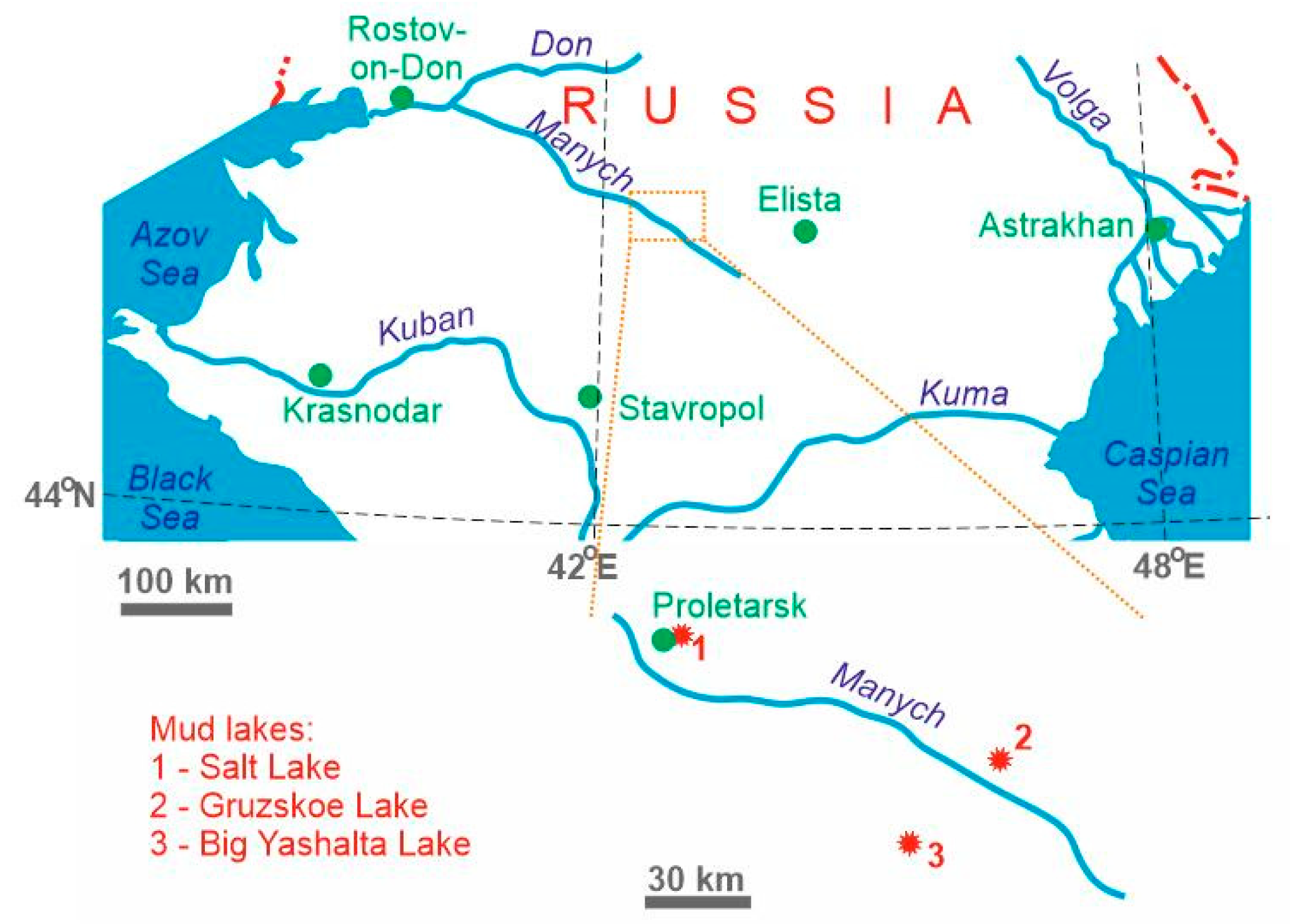
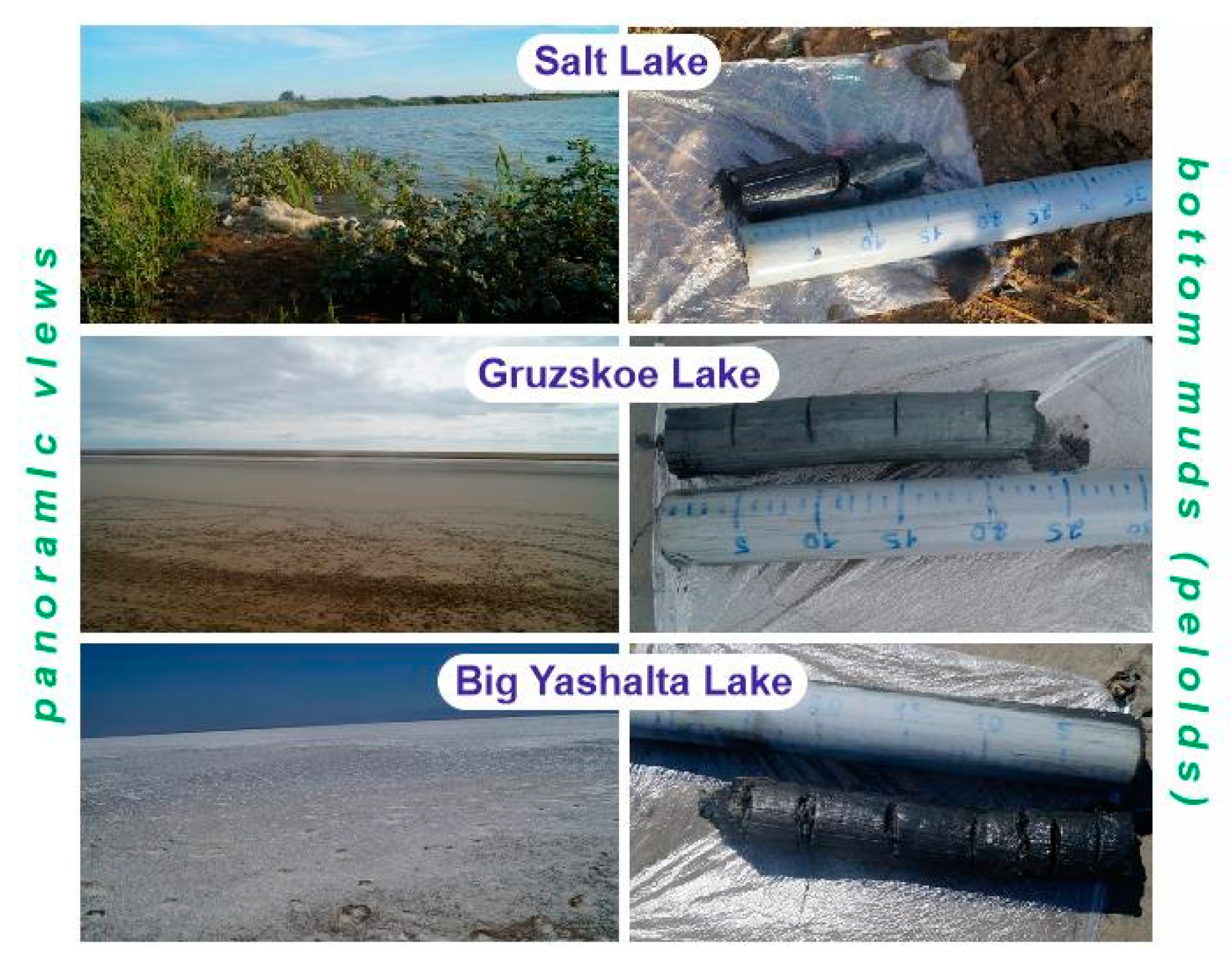
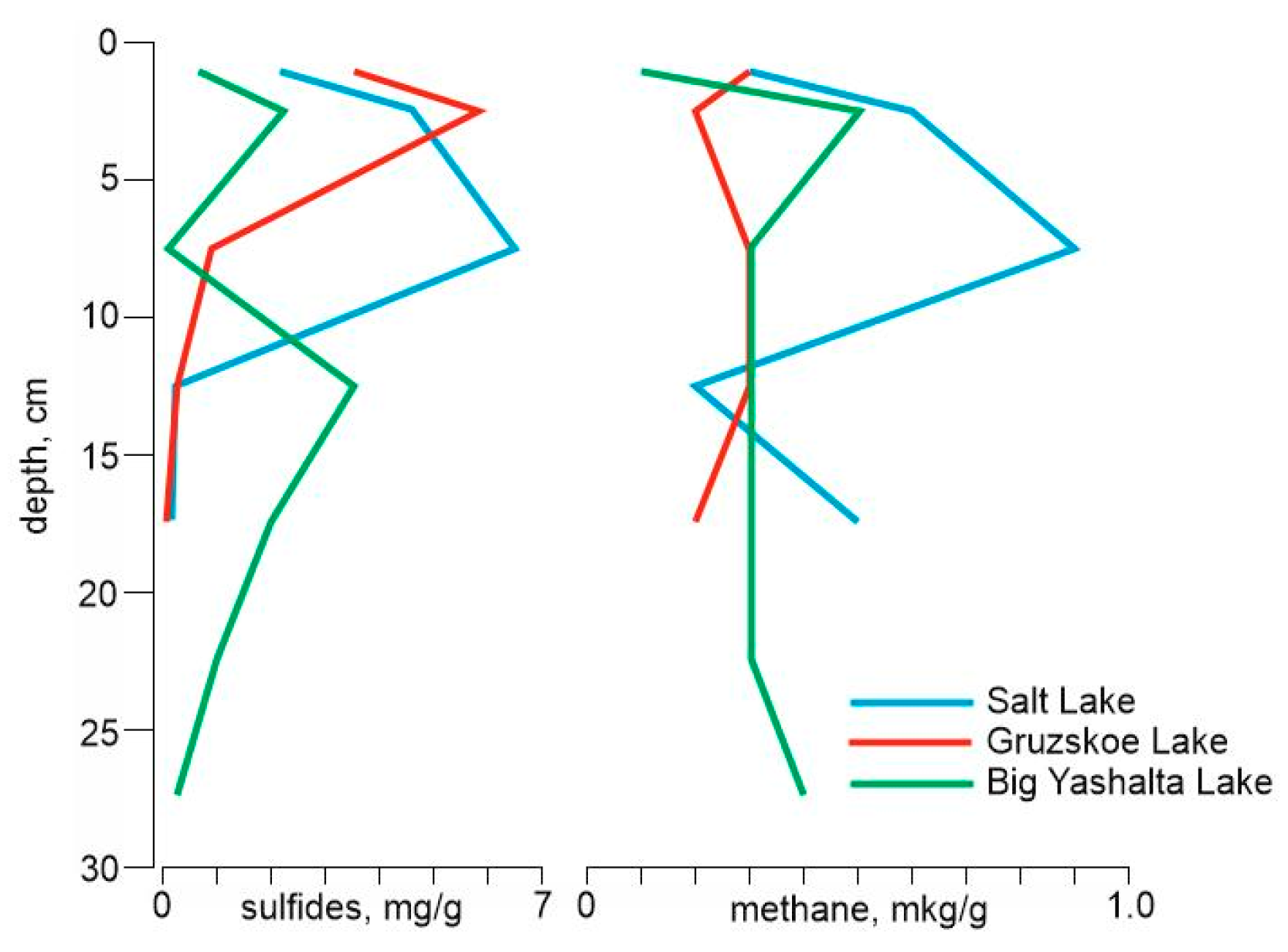
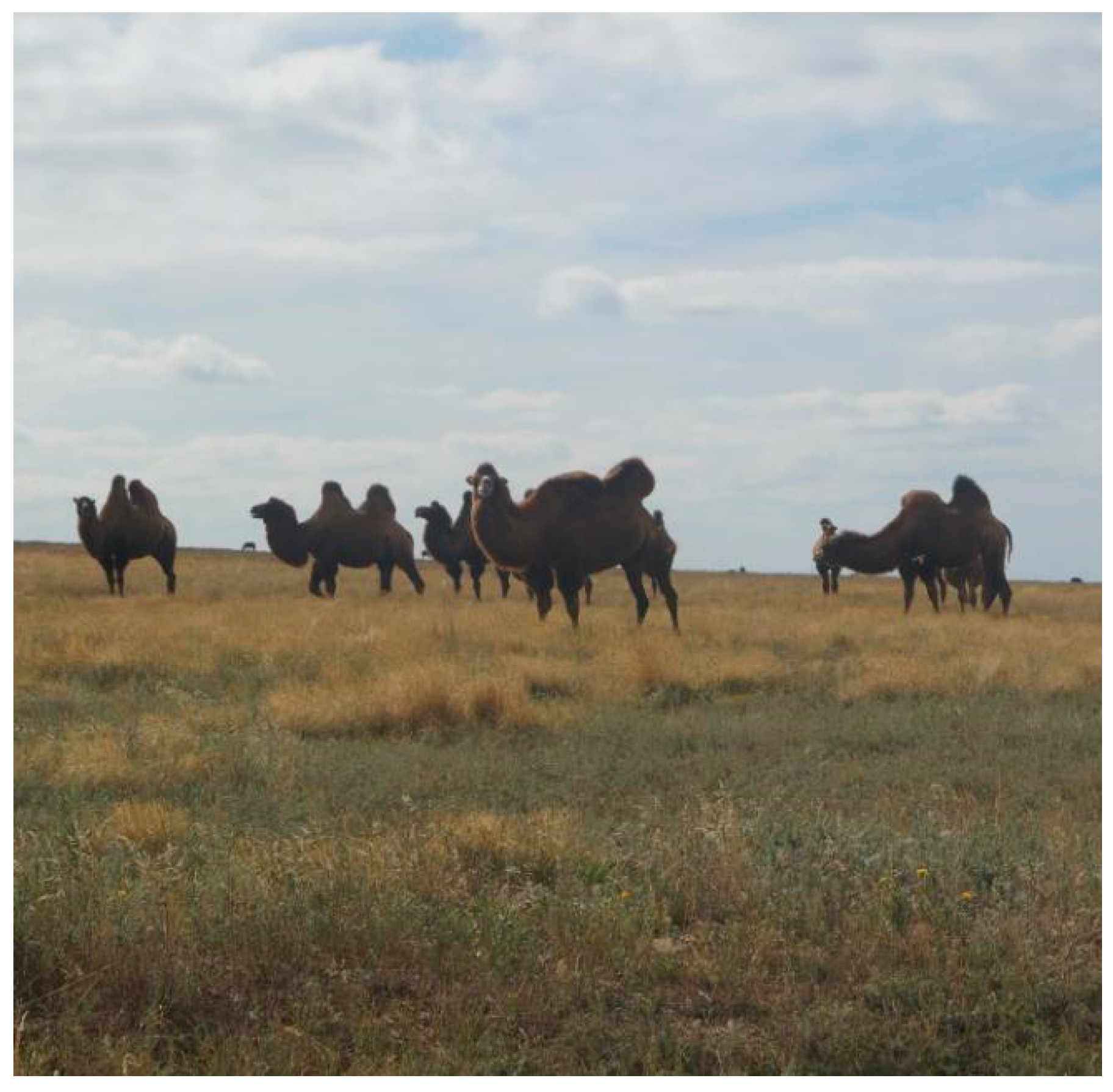
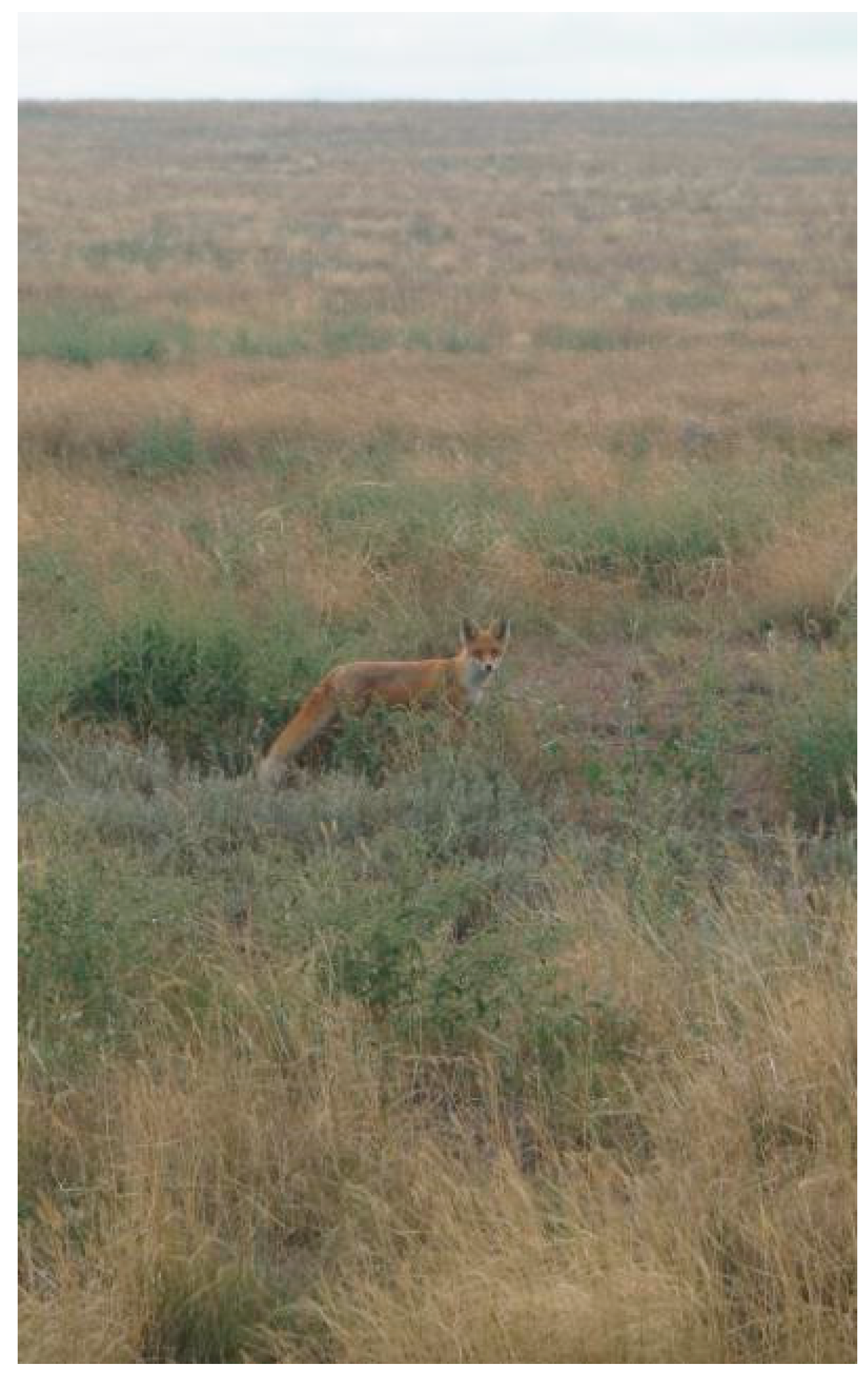
| Main Criteria | Values | Scores |
|---|---|---|
| Scientific knowledge | unknown, lack of publications | 0.0 |
| a few publications | 0.5 | |
| a significant amount of information, publications in major journals | 1.0 | |
| Rarity | not among 3 top sites | 0.0 |
| one of 3 most important sites | 0.5 | |
| the only occurrence | 1.0 | |
| Diversity | <3 abiotic features/processes | 0.0 |
| 3 visible abiotic features | 0.5 | |
| 4 and more abiotic features | 1.0 | |
| Degree of degradation | highly degraded | 0.0 |
| slightly degraded | 0.5 | |
| lack of visible degradation | 1.0 | |
| Physical parameters | <1 km in diameter | 0.0 |
| 1–5 km in diameter | 0.5 | |
| >5 km in diameter | 1.0 | |
| Aesthetic attractiveness | lack of attractiveness | 0.0 |
| attractiveness of unique feature or landscape | 0.5 | |
| attractiveness of the entire site | 1.0 |
| Criteria | Salt Lake | Gruzskoe Lake | Big Yashalta Lake |
|---|---|---|---|
| Scientific knowledge | 0.0 | 0.0 | 0.5 |
| Rarity | 0.5 | 0.5 | 0.5 |
| Diversity | 0.0 | 0.5 | 0.5 |
| Degree of degradation | 1.0 | 1.0 | 1.0 |
| Physical parameters | 0.0 | 0.5 | 1.0 |
| Aesthetic attractiveness | 0.5 | 0.5 | 0.5 |
| Total sum | 2.0 | 3.0 | 4.0 |
© 2019 by the authors. Licensee MDPI, Basel, Switzerland. This article is an open access article distributed under the terms and conditions of the Creative Commons Attribution (CC BY) license (http://creativecommons.org/licenses/by/4.0/).
Share and Cite
Fedorov, Y.A.; Ruban, D.A. Geoheritage Resource of Small Mud Lakes in the Semi-Arid Environments of the Russian South. Resources 2019, 8, 75. https://doi.org/10.3390/resources8020075
Fedorov YA, Ruban DA. Geoheritage Resource of Small Mud Lakes in the Semi-Arid Environments of the Russian South. Resources. 2019; 8(2):75. https://doi.org/10.3390/resources8020075
Chicago/Turabian StyleFedorov, Yuri A., and Dmitry A. Ruban. 2019. "Geoheritage Resource of Small Mud Lakes in the Semi-Arid Environments of the Russian South" Resources 8, no. 2: 75. https://doi.org/10.3390/resources8020075
APA StyleFedorov, Y. A., & Ruban, D. A. (2019). Geoheritage Resource of Small Mud Lakes in the Semi-Arid Environments of the Russian South. Resources, 8(2), 75. https://doi.org/10.3390/resources8020075






